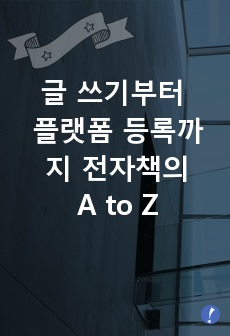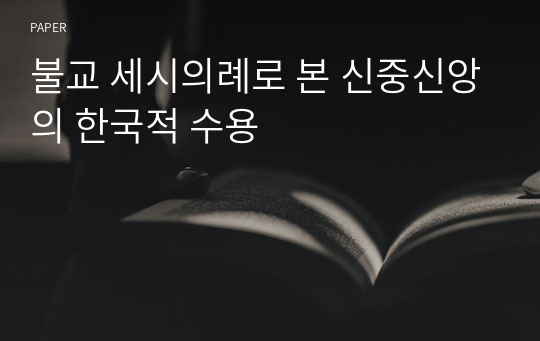* 본 문서는 배포용으로 복사 및 편집이 불가합니다.
서지정보
ㆍ발행기관 : 동방문화대학원대학교 불교문화예술연구소
ㆍ수록지정보 : 불교문예연구 / 10권
ㆍ저자명 : 구미래
ㆍ저자명 : 구미래
목차
Ⅰ. 의례와 신중신앙Ⅱ. 일상의례가 확대된 정초 신중기도
Ⅲ. 마을신앙과 결합된 정초의례의 지속과 변화
Ⅳ. 가신 개념의 영역신과 개년의례(改年儀禮)
Ⅴ. 개별 기능신과 연결된 단오와 칠석
Ⅵ. 신중 관련 세시의례의 특성과 의의
한국어 초록
우리나라 신중의례는 다른 불교국가들에 비해 일상화ㆍ체계화되어 있다. 이는 법당의 구조가 상단ㆍ중단ㆍ하단의 삼단체계로 정립되어 있는 데서도 잘 드러난다. 신중의례는 법당에서 일상적으로 이루어지고 있지만, 연례적 세시의례의 대상이 되는 경우는 지속성을 지닌 채 견고하게 정착되어 있음을 나타낸다. 따라서 신중신앙이 세시의례에 수용되는 양상을 다루어 불교와 민속이 결합된 신앙대상으로서 ‘신중’이 한국인의 종교적 삶에 어떠한 영향력을 미치며 전승되고 있는지 분석하였다.첫째, 정초를 중심으로 ‘시작’의 의미와 결합된 신중신앙의 시기적 특성을 뚜렷이 살필 수 있다. 신중의례는 일상적으로 이루어지면서 매달의 초하루법회와 새해의 정초기도에서 본격적으로 부각된다. 이는 불교의례의 구조에서 볼 때, 신중을 먼저 청하는 목적이 의례의 원만한 회향을 위해 도량을 옹호하고 삿된 것을 물리치는 의미를 지니는 것과 같다. 일상의 신중의례가 매월의 초하루기도와 연례적 정초기도로 확대되면서 그 존재의미를 공고히 다져가고 있다.
둘째, 마을에서 공동체의 주신을 모시고 지내는 정초 동제에 사찰이 참여하는 일련의 양상을 들 수 있다. 마을신앙과 결합된 정초의례로 당산제ㆍ산신제ㆍ용신제 등이 있으며, 사찰에서 일방적으로 이끌어가는 의례만이 아니라, 마을과 사찰이 공동주체가 되거나, 지역축제에서 제의를 맡아 공동체의 일부로 기능하는 등 다각적인 양상을 살필 수 있다.
셋째, 경내의 곳곳에 자리한 영역신을 대상으로 한 의례가 연말연초에 집중 설행되고 있다. 이들 영역신은 가정신앙의 가신(家神) 개념과 유사한 성격을 지녀 사천왕은 문신, 조왕신은 부엌신, 산신과 가람신은 터주신 등에 견줄 만하다. 특히 이들 신을 대상으로 한 의례를 개년(改年)의 시점에 올리고 있어, 한 해가 교차되는 종교적 시간에 삿된 기운이 침범하지 않도록 가람을 수호하려는 바람을 읽을 수 있다.
넷째, 개별 기능신으로 단오의 용왕신과 칠석의 칠성신을 들 수 있다. 용왕신은 양기가 가장 강한 단오에, 불기운을 눌러 화재를 막거나 비를 빌기 위해 사찰의 주요 세시의례의 대상이 되기도 한다. 칠성신은 자녀의 무사다복을 비는 대표적인 신격으로, 칠석에 올리는 칠성기도는 이러한 불자들의 소망을 담은 소중한 의례로 전승되고 있다.
영어 초록
The Korean rites of Guardian Deities(神衆) are routinized and systematized compared to other Buddhist countries. This is also shown in the three Ritual Altars(三壇) system of the Buddhist sanctuary structure. That is, although rites of Guardian Deities are performed routinely, objects of annual rites are firmly settled with continuity. Therefore, the pattern that Guardian Deities are accepted in rites of annual events(歲時) was analyzed, as religious objects where Buddhism and folklore are combined.First, the temporal characteristics of religion of Guardian Deities, which was combined with the meaning of ‘beginning’ focusing on early January, can be clearly identified. Rites of Guardian Deities are performed routinely, and stand out in earnest at Buddhist ceremonies on the first day of each month and prayers in early January of the New Year. Considering the structure of Buddhist rites, this is the same as the purpose of requesting Guardian Deities first to defend Doryang(道場) for holding Buddhist rites smoothly and to defeat impious things.
Second, there are a series of patterns that temples participate in Dongje(洞祭) in early January in which a village enshrines the main god(主神) of the community. Rites performed in combination of village religions early in January include Dangsanje(堂山祭), Sanshinje(山神祭) and Yongwangje(龍王祭). There are multi-dimensional patterns such as rites led by a temple, those co-hosted by a village and a temple, and ancestral rites(祭儀) held by a local festival functioning as a part of the community.
Third, rites for gods of each area in the precincts of a shrine are given concentration at the beginning and end of the year. Those gods have similar characteristics with the concept of God of House(家神); Four Heavenly Kings(四天王) can be compared with the God of door(門神), Jowangshin(竈王神) with the God of kitchen, and Sanshin(山神) and Garamshin(伽藍神) with the God of the house guardian. The fact that rites for those gods are performed in the new year(改年) shows the desire to protect Buddhist temples from an impious aura at the time of the New Year.
Fourth, there are gods of individual functions such as god of Yongwangshin on Dano(端午) and god of Chilsungshin(七星神) on July 7th in the lunar calendar. Temples conduct major annual rites for god of Yongwang on Dano when energy is in full swing to prevent fire by suppressing the force of the fire or to wish for rain. God of Chilsung is the representative divinity wishing for safety and great fortune for children, and Chilsung prayer on July 7th in the lunar calendar has been passed down among Buddhists as a hopeful and valuable rite.

























